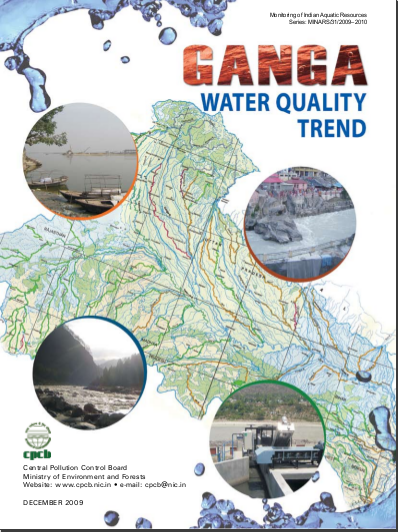Contamination, Pollution and Quality
Recycling of water during distillation in laboratories and industries saves gallons of water - Blog post by Dr K K Sharma
Posted on 11 May, 2011 02:21 PMIn the process of distillation vapors passing through the condenser tube are cooled and condensed by water flowing through condenser tube in the condenser unit of the apparatus. In almost all laboratories the water used for cooling the condenser tube is coming from the water supply tap near the wash basin. The precious water after circulating through the condenser tube is left into the drain as wastewater. It has been observed that about 40 liters of water is required for cooling for making 500 ml of distilled water. The water after cooling is generally left to go into the drain.
The following video has been prepared by me and is released by youtube. The video gives good information for those who want to learn about the traditional method of glass distillation and the modified Recycling Distillation Technique (Sharma, 2004) that saves gallons of water.
An analysis of West Bengal Ground Water Resources (Management, Control and Regulation) Act 2005
Posted on 11 May, 2011 02:17 PMIntroduction
Ganga water quality trend - A report by Central Pollution Control Board (2009)
Posted on 30 Apr, 2011 05:39 PM The data has been collected over a period of many years from 39 water quality monitoring stations along the main river and 102 stations on its tributaries which were setup in 2008/09.
The data has been collected over a period of many years from 39 water quality monitoring stations along the main river and 102 stations on its tributaries which were setup in 2008/09.
The study focuses on the parameters for dissolved oxygen, (DO), biochemical oxygen demand (BOD) and faecal coliforms (FC) as these indicate the biological health of the river. The period of study for the river Ganga is 1999-2008. The study finds that most of the water quality parameters studied do not meet the standards.
Peel potential - Bananas can filter heavy metals from water - Article from Down to Earth
Posted on 25 Apr, 2011 12:26 PMThe Delhi superbug debate - A mirror reflecting our own inadequacies?
Posted on 23 Apr, 2011 07:12 PMEven with its questionable merit, the superbug study has identified the need for us to question the focus that we have on finding narrow solutions to health issues .It has also highlighted the urgent need to address the broader infrastructural needs of the country such as access to safe drinking water and sanitation
Image source: Wikimedia Commons
The superbug study
New Delhi and the world was hit by panic last week because of a recent study published in the journal The Lancet Infectious Diseases , which found a high level of water contamination acquired from drains and public taps across India's capital city. The water was allegedly contaminated with superbugs, or what has been referred to as bacteria carrying the NDM 1 gene. Four percent of drinking water samples (2 of 50 samples) and 30 percent of drain samples (51 out of 171 samples) were found to be contaminated with superbugs [1, 2].
Development of training module for water safety plan in urban areas - A document by ESCI
Posted on 20 Apr, 2011 03:48 AMA Water Safety Plan (WSP) is an improved risk management tool designed to ensure the delivery of safe drinking water. It identifies hazards, means to control them, means and actions to identify loss of control and its restoration. It comprises system assessment and design, operational monitoring and management plans (including documentation and communication). Water quality guidelines have been issued by the WHO.
Guidance manual for drinking water quality monitoring and assessment - A document by NEERI and NICD
Posted on 20 Apr, 2011 03:09 AMIn order to safeguard the health of the people, drinking water must meet quality standards. The main issues involved in drinking water safety are water quality management, surveillance and control mechanisms.
Levels of contaminants need to be ascertained through standard procedures. Each agency involved in water supply in India, has its own laboratory test practices and this manual details methods for all parameters adoptable by all laboratories.
Drinking water quality monitoring and development of surveillance mechanisms - A pilot study done by NEERI in New Delhi
Posted on 20 Apr, 2011 02:30 AMThe WHO guidelines for drinking water quality aim to protect public health and the key way to ensure this is through the adoption of Water Safety Plans (WSP). WSP includes setting of health targets, risk analysis and its assessment to identify priority hazardous scenarios and management of the risk.
Water safety plan: A manual for pilot study areas of Hyderabad
Posted on 20 Apr, 2011 02:03 AMThe most effective means of consistently ensuring the safety of drinking water supply is through the use of a comprehensive risk assessment and management approach, that encompasses all steps in water supply from catchment to consumer. Such approaches are called Water Safety Plans (WSPs).
The aim of a WSP is to organize and systematize records of management practices applied to drinking water and to ensure workability of such practices to organized drinking water supply.
Guidelines for water safety plans for rural water supply systems - A document by SIAES and WHO India (2009)
Posted on 20 Apr, 2011 01:10 AM Delivery of safe drinking water is vital for protecting public health and of promoting more secure livelihoods.
Delivery of safe drinking water is vital for protecting public health and of promoting more secure livelihoods.
The traditional approach to water quality and safety management has relied on the testing of drinking water, as it leaves the treatment works or at selected points, either within the distribution system or at consumer taps. It is referred to as ‘end‐product testing’.





